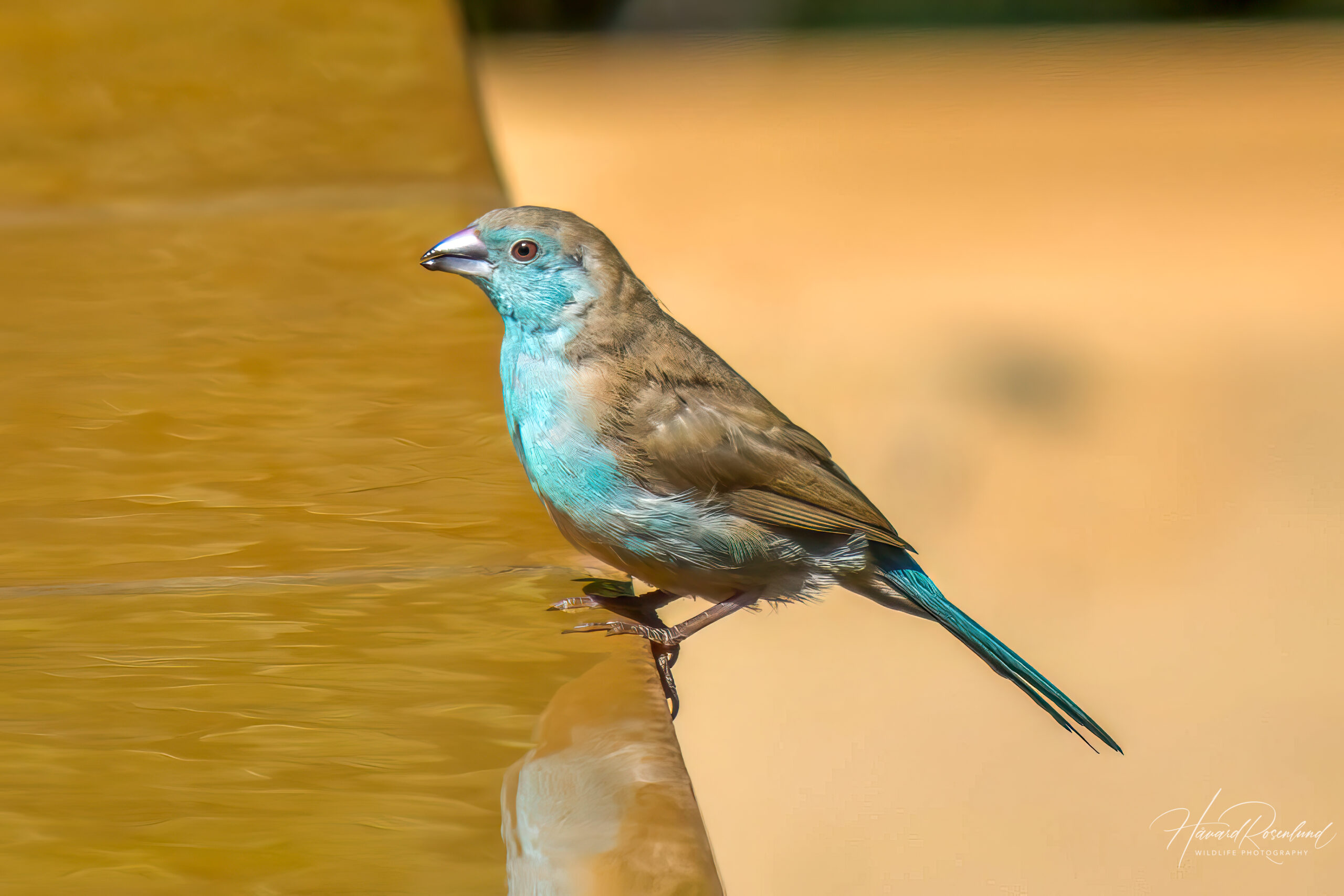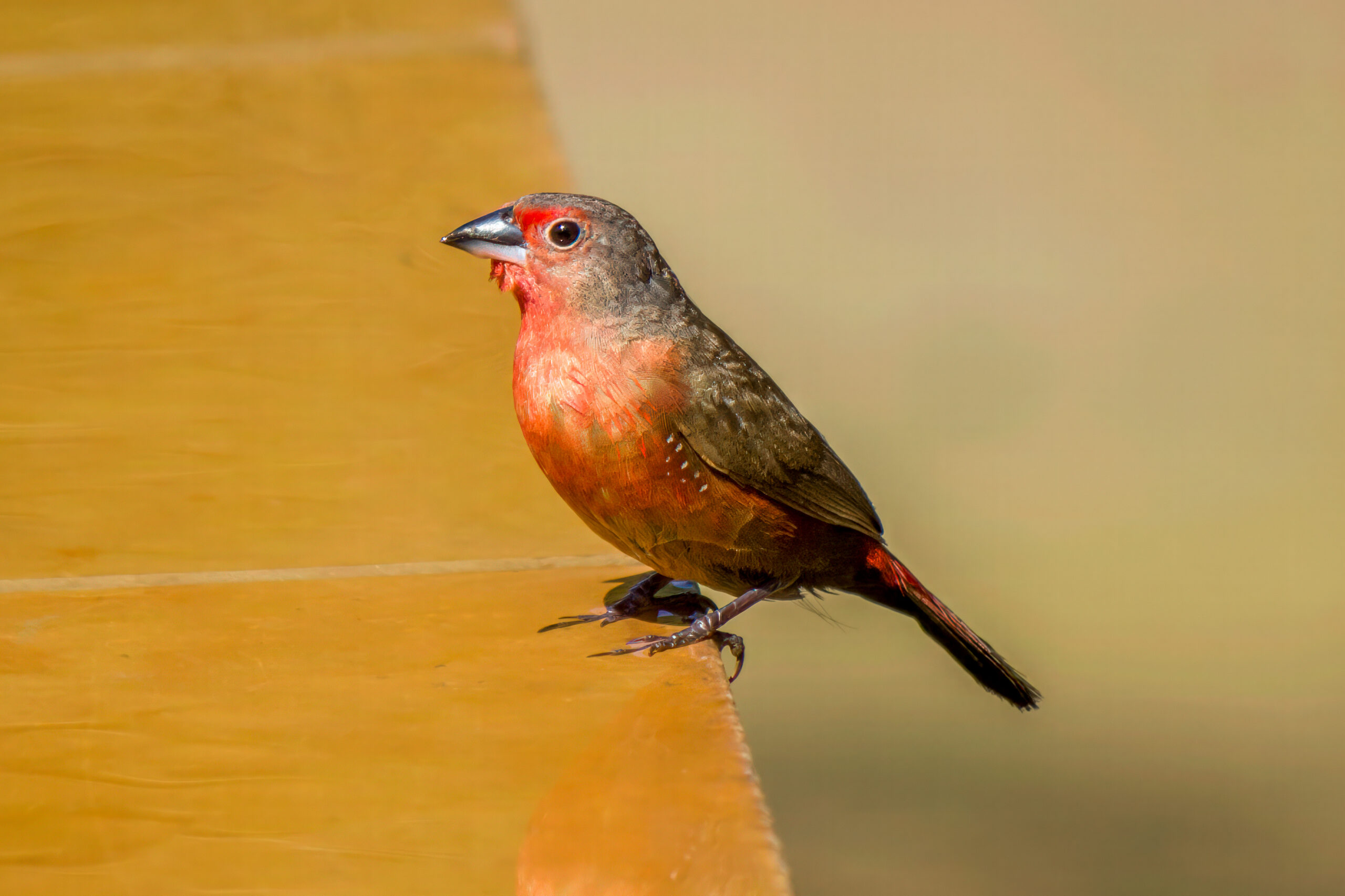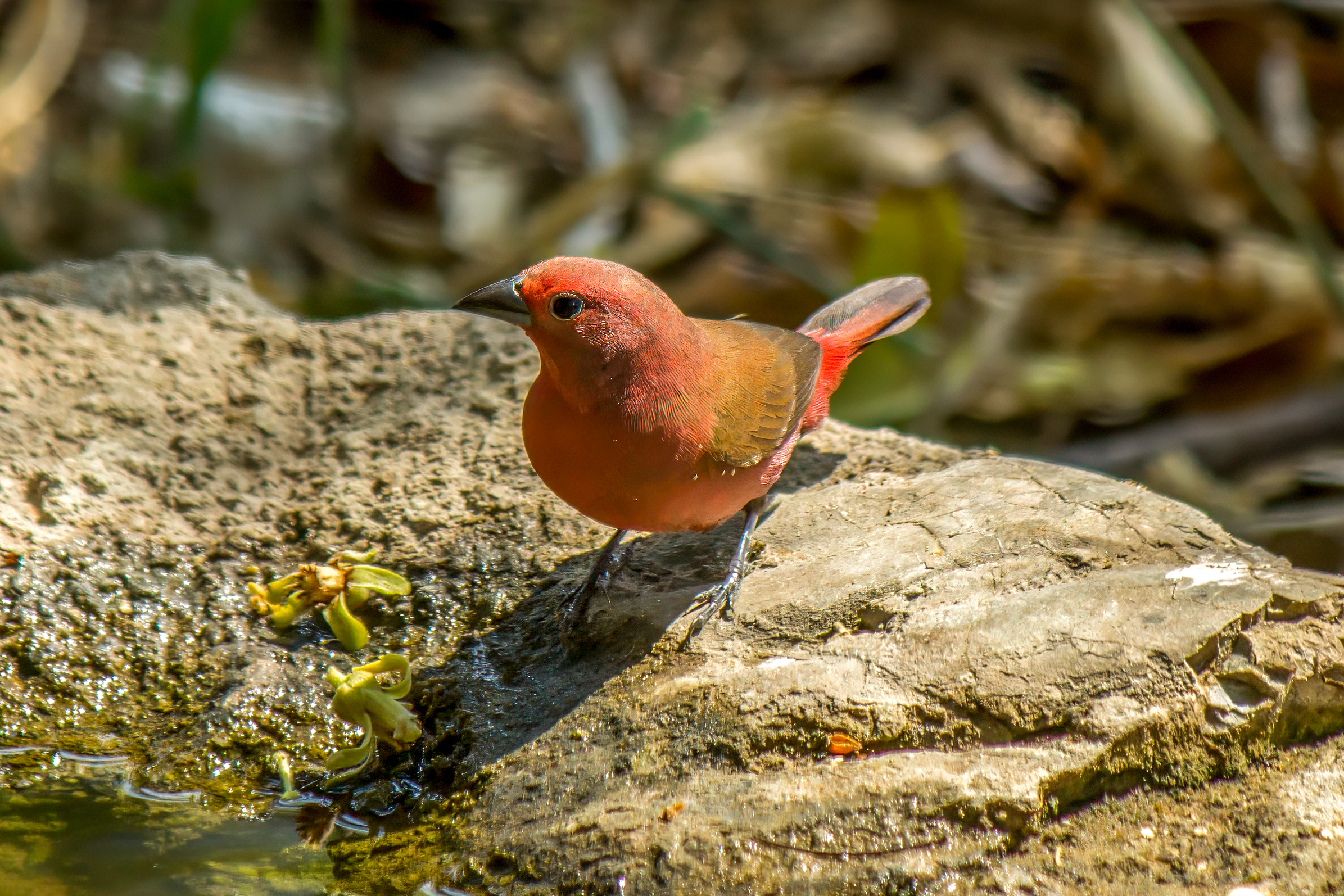Blue Waxbill
(Uraeginthus angolensis)
Description
The blue waxbill or blue-breasted cordon-bleu (Uraeginthus angolensis) is a common species of estrildid finch in southern Africa. It grows to a length of 12-13 cm (4.7 -5.1 in). The face, undersides and tail-feathers are powder-blue. Lower portions of the belly are white or pale grey. Top of the head, backside and wings are greyish-brown. The female is somewhat paler blue than the male. Juveniles are only pale blue on the face, parts of the breast and tail-feathers. The red-cheeked cordon-bleu (Uraeginthus bengalus) is almost identical but has a conspicuous red cheek and pinkish bill.
Diet & habitat
The blue waxbill is often found in habitats such as savannas, grasslands, and dry woodlands. It does well in semi-arid environments. It can also be found in forest edges and in cultivated land with natural growth. Seeds take up the bulk of the diet, but it does also eat small invertebrates such as termites and caterpillars.
Nesting
The nest is oval-shaped with a side-entrance and is built by both parents. It is made of grass and the insides are lined with feathers. It is often placed among the foliage of a tree or a bush. Quite often the nest is constructed close to a wasp’s nest. This might be because the presence of the wasp’s nest indicates the absence of ants, which otherwise could attack the nest. The blue waxbill can also use nests made by other species, such as the scarlet-chested sunbird, spectacled weaver and black-chested prinia. The female lays 2-7 eggs, which are incubated by both parents for 11-12 days. Both sexes feed the chicks with seeds and termites, and they leave the nest after 17-21 days. The chicks become fully independent after another two weeks or so.
Status
The blue waxbill is common throughout its range and there are no threats to the species. It is listed as least concern on the IUCN Red List.







